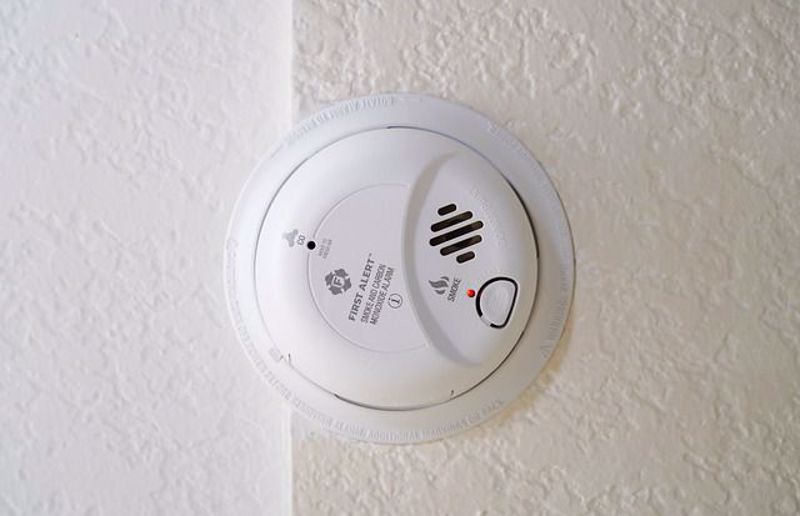Home Depot puts your safety above anything else. With a Home Depot Money Saving Coupon you can save money on the best safety devices for your home. Smoke alarms are essential safety devices in any home or building, as they help to detect the presence of smoke and alert occupants to potential fire hazards. But how exactly do smoke alarms work? In this article, we will explore the science behind smoke alarms and how they operate to keep us safe.
Smoke alarms are typically designed to detect the presence of smoke or other potentially harmful gases in the air. When smoke particles are present, they can scatter light in a particular way, which triggers the smoke alarm's detection system.
Most smoke alarms use one of two types of smoke detection methods: ionization and photoelectric.
Ionization smoke alarms work by using a small amount of radioactive material to ionize the air inside the detector. When smoke particles enter the chamber, they disrupt the ionization process and cause a change in electrical current, which triggers the alarm. This type of smoke detector is more sensitive to fast-burning fires that produce little smoke, such as those caused by flammable liquids or paper.
Photoelectric smoke alarms, on the other hand, use a small light source and a photoelectric sensor to detect smoke particles. When smoke enters the chamber, it scatters the light beam, which triggers the alarm. This type of smoke detector is more sensitive to slow-burning fires that produce more smoke, such as those caused by electrical appliances or furniture.
In addition to these two methods, some smoke alarms use a combination of ionization and photoelectric detection to provide more comprehensive coverage.
Smoke alarms typically contain a power source, which may be a battery, a hardwired electrical connection, or both. Batteries are commonly used in portable smoke detectors, while hardwired connections are often found in commercial buildings and new home construction.
Regardless of the power source, smoke alarms typically have a test button that allows users to check that the alarm is functioning properly. It's important to test your smoke alarms regularly to ensure they are working correctly and replace the batteries at least once a year, or as needed.
Some newer smoke alarms may also have additional features, such as wireless connectivity, carbon monoxide detection, or voice alerts. These features can provide additional safety benefits, but it's important to choose a smoke alarm that meets your specific needs and budget.
It's important to note that smoke alarms are not foolproof and can still fail to detect smoke in certain situations. For example, if a fire starts outside of the range of the smoke alarm, or if the smoke alarm is located in a part of the building that is not being affected by the fire, it may not trigger the alarm. Additionally, smoke alarms may not work properly if they are not installed correctly, or if they are not maintained or replaced as needed.
To maximize the effectiveness of your smoke alarms, it's important to follow some basic safety guidelines. First, make sure that you have enough smoke alarms installed in your home or building. The National Fire Protection Association recommends having smoke alarms installed inside each bedroom, outside each sleeping area, and on every level of the home, including the basement.
Second, make sure that your smoke alarms are installed correctly and in the right locations. Smoke alarms should be installed on the ceiling or high up on a wall, away from corners, doors, and windows. They should also be at least 10 feet away from cooking appliances to prevent false alarms.
Third, test your smoke alarms regularly and replace the batteries at least once a year, or as needed. It's also important to replace your smoke alarms every 10 years, or as recommended by the manufacturer.
Finally, have a fire escape plan in place and practice it regularly with your family or coworkers. In the event of a fire, a smoke alarm can provide an early warning, but it's important to know how to escape safely and quickly.




